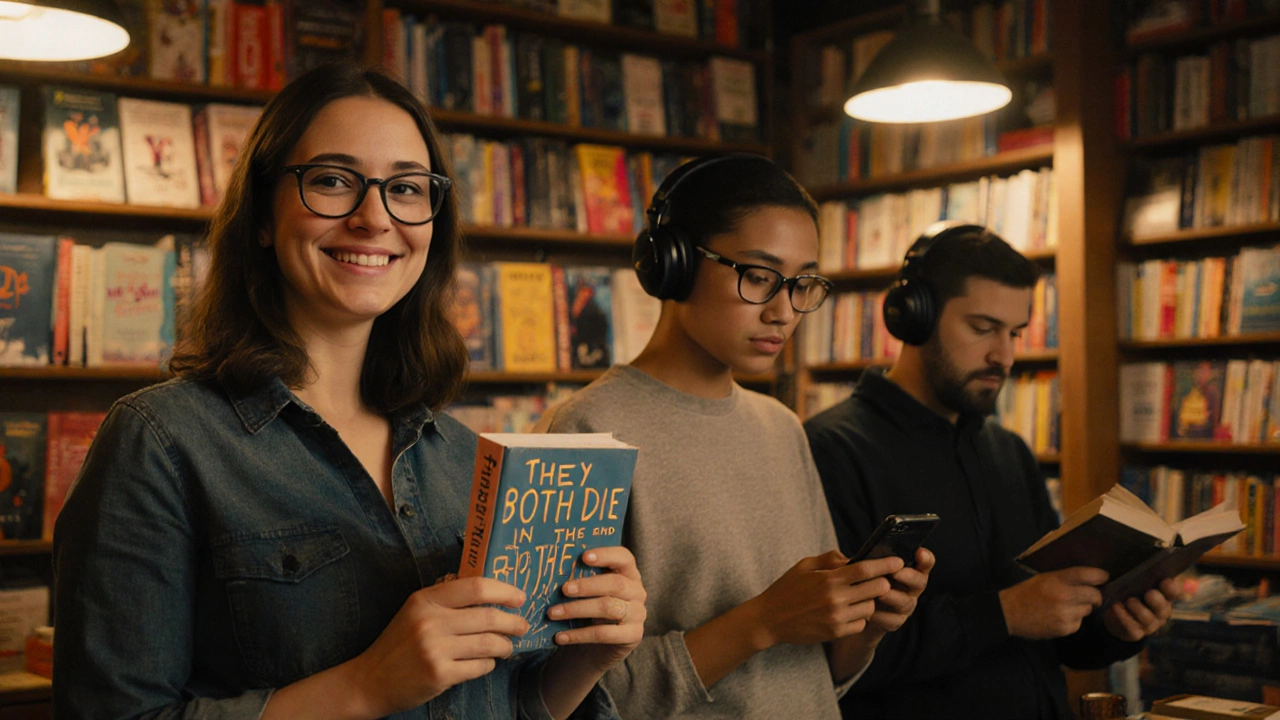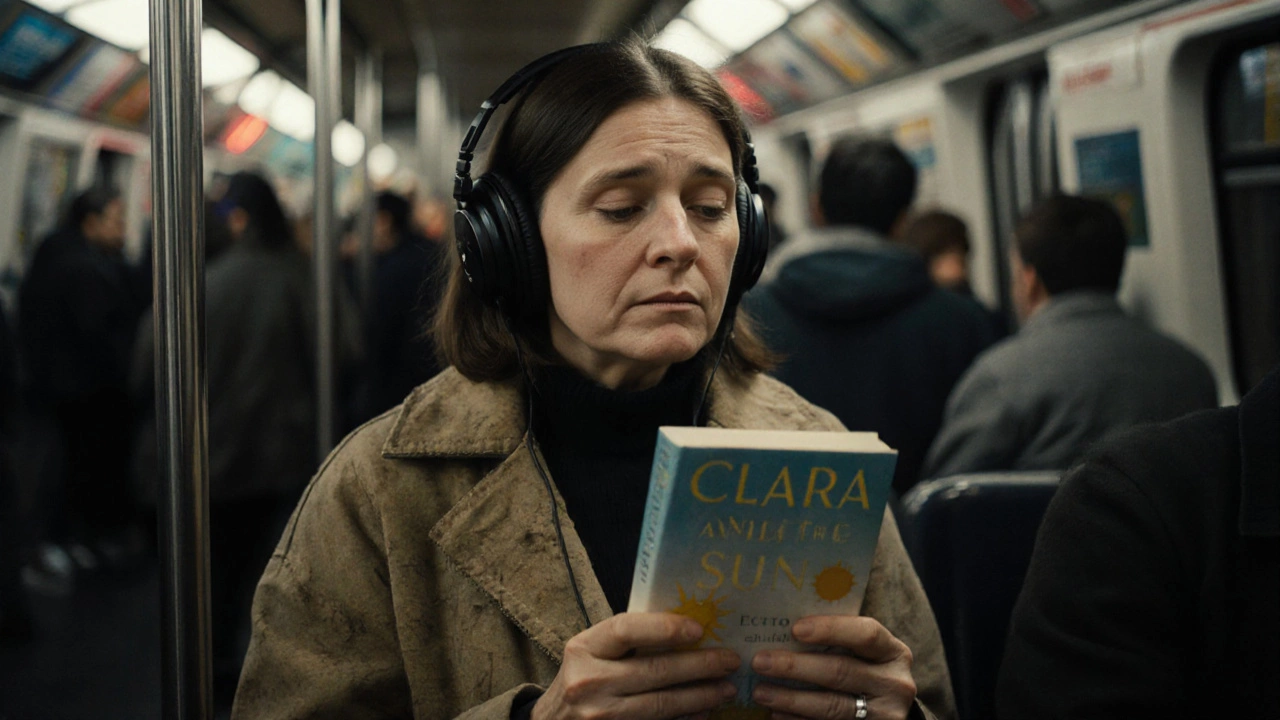Who Reads Young Adult Fiction? The Real Audience Behind the Bestsellers

YA Reader Demographics Calculator
Who Really Reads YA Fiction?
The article reveals that over half of YA readers are adults aged 18-44, with 27% over 30. This calculator shows how readership breaks down by age groups and genre preferences.
Young adult fiction isn’t just for teenagers anymore. If you walk into any bookstore or scroll through your favorite reading app, you’ll see stacks of YA novels with covers featuring brooding vampires, star-crossed lovers, or dystopian rebels - and the people buying them aren’t always 16. In fact, a growing number of readers over 30 are the ones turning the pages. The idea that YA is only for teens is a myth that’s been shattered by sales data, library checkouts, and online reading communities.
Most YA Readers Are Adults
A 2024 survey by the Book Industry Study Group found that 55% of young adult fiction buyers are adults aged 18 to 44. That’s more than half. Among those, 27% are over 30. These aren’t just parents buying books for their kids - they’re reading them for themselves. Book clubs, Instagram booktok, and Goodreads groups are filled with adults discussing the emotional arcs of characters like Katniss Everdeen, Eleven from Stranger Things (based on the YA novel Stranger Things: The Other Side), or the found family in The Seven Husbands of Evelyn Hugo.
Why? Because YA doesn’t talk down to its readers. It tackles real issues - grief, identity, trauma, first love, systemic injustice - with raw honesty and fast pacing. Unlike adult literary fiction, which sometimes lingers in metaphor, YA gets to the heart of the matter quickly. That clarity pulls in readers who are tired of overly complex prose or slow burns. It’s not about the age of the characters; it’s about the emotional truth.
Teens Still Read YA - But Not Like They Used To
Yes, teenagers still read YA. But their habits have changed. In 2015, a teen might have read three YA novels a month. Today, they’re more likely to binge one in a weekend - then move on to TikTok book reviews, audiobooks, or graphic novels. The traditional YA reader is no longer the quiet kid in the library corner. They’re the teen scrolling through BookTok during lunch, watching a 60-second summary of One of Us Is Lying, then downloading it on Libby.
And here’s the twist: teens are reading less fantasy and more contemporary realism. Books like They Both Die at the End, The Hate U Give, and On the Come Up dominate school reading lists and social media buzz. These aren’t escapism stories - they’re mirrors. Teens want to see their own struggles reflected: anxiety, racial identity, queer discovery, economic pressure. Publishers noticed. In 2025, 68% of new YA releases are contemporary or speculative realism, down from 82% fantasy-heavy titles in 2018.
Why Adults Are Drawn to YA
Adults don’t read YA because they’re stuck in adolescence. They read it because it works differently than adult fiction.
- Speed: YA novels average 250-350 pages. No 600-page sagas. You finish one in a day.
- Emotional clarity: The protagonist’s inner conflict is front and center. No vague symbolism. You feel their pain, hope, rage - clearly.
- Hopeful endings: Even in dark stories, there’s often a thread of resilience. That matters to adults who’ve lived through burnout, divorce, or loss.
- Relatable stakes: High school might seem trivial, but the emotions aren’t. First heartbreak, betrayal by a friend, standing up to a bully - these are universal.
Adults who grew up reading The Hunger Games or Harry Potter are now returning to the genre. They’re not nostalgic - they’re searching for stories that don’t make them feel alone. A 38-year-old teacher in Ohio told me she reads YA to remember what it felt like to believe change was possible. “I need that,” she said. “Life doesn’t always give it to me.”

Gender and Identity in the YA Audience
The YA audience is more diverse than ever - and so are the readers. Women still make up the largest group, at about 70%, but male-identifying readers are growing fast. A 2025 study by the American Library Association found that 31% of YA readers identify as non-binary, genderfluid, or trans. That’s up from 12% in 2019.
Books like Red, White & Royal Blue, They Both Die at the End, and The Song of Achilles are being read by LGBTQ+ audiences of all ages. These aren’t just niche titles - they’re bestsellers. And they’re not just read by queer people. Straight readers are reading them too, because the stories are about love, loss, and courage - not labels.
Even in conservative regions, YA books are quietly making their way into homes. A librarian in rural Kansas reported that the most checked-out YA titles last year were They Both Die at the End and One of Us Is Lying - both featuring queer characters. “People don’t care about the label,” she said. “They care about the story.”
What YA Readers Want - And Don’t Want
Readers of all ages are tired of tired tropes. No more love triangles where the girl chooses between the brooding vampire and the charming werewolf. No more “chosen one” narratives without consequences. Readers now demand:
- Complex characters with flaws, not just moral purity
- Realistic consequences - not everything gets fixed by the last chapter
- Authentic representation - not just checking boxes
- Stories that don’t center white, cis, straight, able-bodied protagonists
Books that succeed today do so because they feel lived-in. Clara and the Sun by J. Lee (2024) became a surprise hit because its main character is a 17-year-old girl caring for her mother with early-onset dementia. No magic. No romance. Just quiet, devastating realism. It sold over 2 million copies - mostly to readers over 30.
On the flip side, books that feel manufactured - like a formulaic romance with a billionaire and a “poor but pure” heroine - are flopping. Readers are savvy. They can tell when a book is written to trend, not to connect.

The Rise of Audiobooks and YA
More than 40% of YA readers now listen to audiobooks. That’s higher than any other fiction genre. Why? Because YA is made for listening. Short chapters. Fast pacing. Emotional narration. The right voice actor can turn a good book into an unforgettable experience.
Adults especially love audiobooks for commutes, workouts, or winding down before bed. A 42-year-old nurse in Chicago listens to It Ends With Us on her way home from the ER. “It’s the only time I let myself cry,” she said. “And I need that.”
Platforms like Audible and Libby have seen YA audiobook downloads jump 62% since 2022. Narrators like Rebecca Soler, Theo Perkins, and Bahni Turpin have become stars in their own right. Their voices don’t just read the words - they carry the weight of the story.
YA Isn’t a Genre. It’s a Feeling.
Young adult fiction isn’t defined by age. It’s defined by intensity. It’s the feeling of being on the edge of something - of change, of discovery, of becoming. That’s not a teenage thing. That’s a human thing.
Adults read YA because it reminds them of what it felt like to believe in something fiercely. Teens read it because it tells them they’re not alone. And that’s why the genre isn’t going anywhere. It’s evolving - becoming more diverse, more honest, more real. The readers? They’re everywhere.
Is young adult fiction only for teenagers?
No. While teens are still a major part of the audience, over half of YA buyers are adults aged 18 to 44, and nearly 30% are over 30. Adults read YA for its emotional clarity, fast pacing, and honest storytelling - not because they’re stuck in adolescence.
Why are adults reading YA books?
Adults read YA because it delivers strong emotions without unnecessary complexity. The stories are concise, emotionally direct, and often end with hope or resilience - qualities many adults crave in a busy, overwhelming world. Many also return to YA because they grew up with it and find comfort in its authenticity.
What types of YA books are most popular today?
Contemporary realism dominates. Books tackling mental health, racial identity, LGBTQ+ experiences, and social justice are top sellers. Fantasy still has a place, but it’s no longer the default. Titles like The Hate U Give, They Both Die at the End, and Clara and the Sun show readers want stories grounded in real struggles.
Do boys and men read YA?
Yes. While women still make up the majority of readers, male-identifying readers are growing fast. Books with male protagonists dealing with grief, trauma, or identity - like One of Us Is Lying or The Poet X - are gaining traction. Graphic novels and dystopian stories also attract more male readers than ever before.
Are audiobooks changing who reads YA?
Absolutely. Over 40% of YA readers now listen to audiobooks, especially adults. The fast pace and emotional intensity of YA make it perfect for audio. Narrators with strong voices turn stories into immersive experiences, making YA accessible during commutes, workouts, or downtime.
